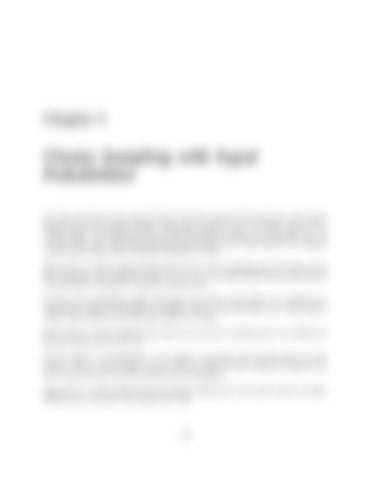Chapter 5
Cluster Sampling with Equal Probabilities 5.1 If the nonresponse can be ignored, then p̂ is the ratio estimate of the proportion. The variance estimate given in the problem, though, assumes that an SRS of voters was taken. But this was a cluster sample—the sampling unit was a residential telephone number, not an individual voter. As we expect that voters in the same household are more likely to have similar opinions, the estimated variance using simple random sampling is probably too small. 5.2 (a) This is a cluster sample because there are two sizes of sampling units: the clinics are the psus and parents who attended the clinics are ssus. It is a one-stage sample because questionnaires were distributed to all parents visiting the selected clinics. (b) This is not a probability sample. The clinics were chosen conveniently. It is certainly not a representative sample of households with children because, even if the clinics were a representative sample, many parents do not take their children to a clinic. 5.3 (a) This is a cluster sample because there are two levels of sampling units: the wetlands are the psus and the sites are the ssus. (b) The analysis is not appropriate. A two-sample t test assumes that all observations are independent. This is a cluster sample, however, and sites within the same wetland are expected to be more similar than sites selected at random from the population. 5.4 (a) This is a cluster sample because the primary sampling unit is the journal, and the secondary sampling unit is an article in the journal from 1988.
103


